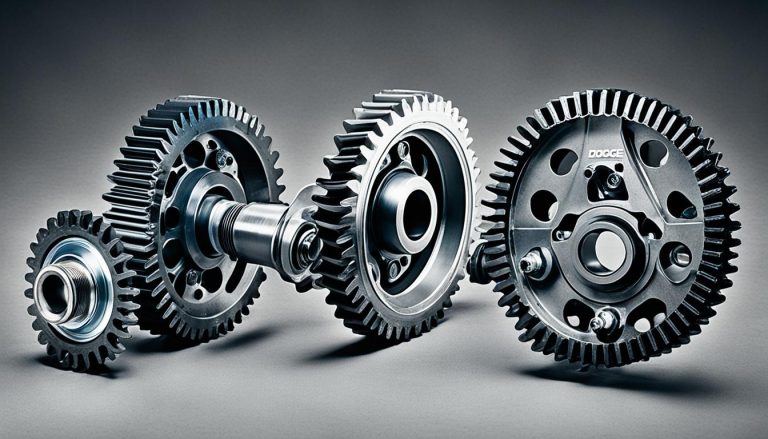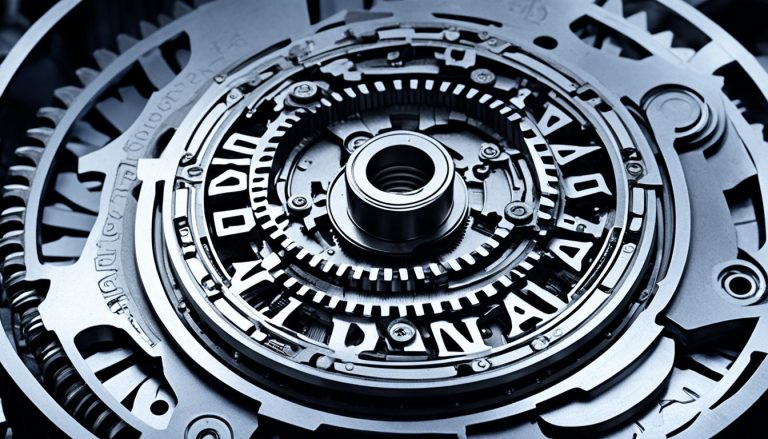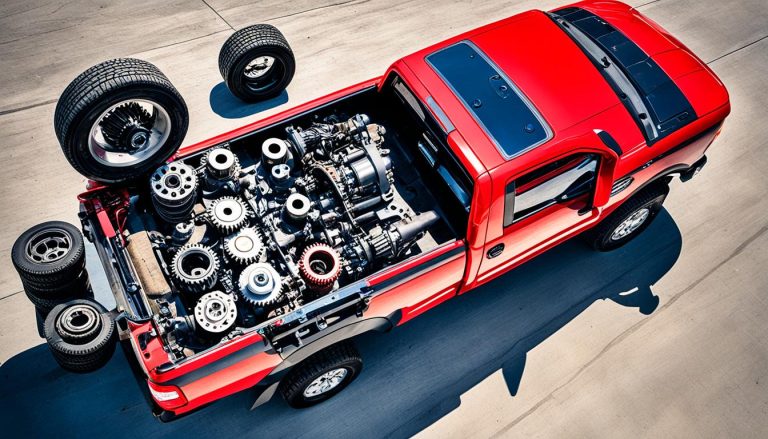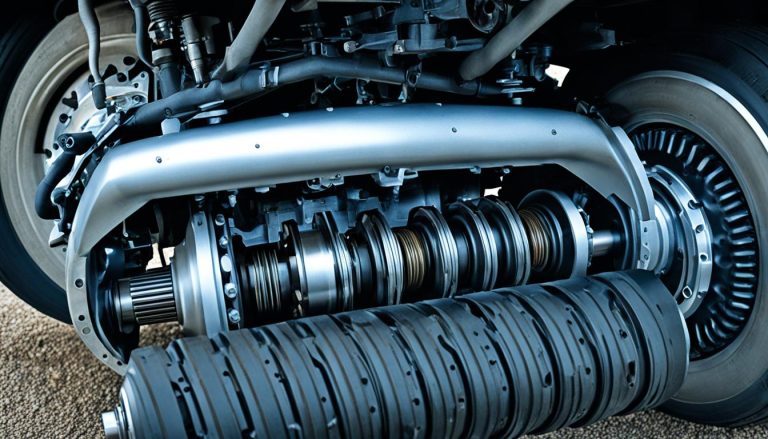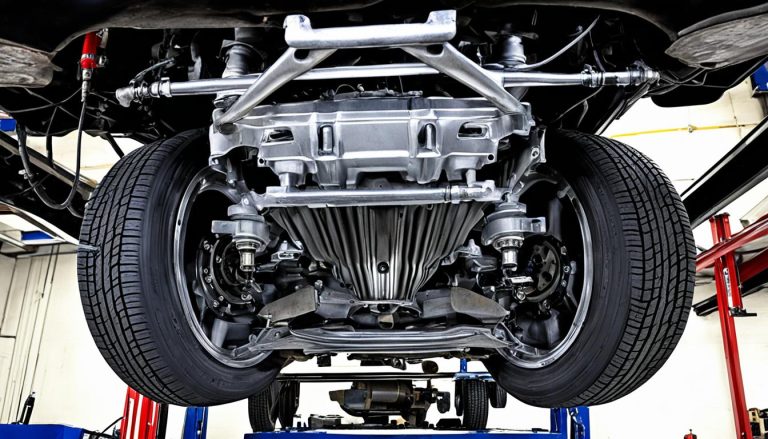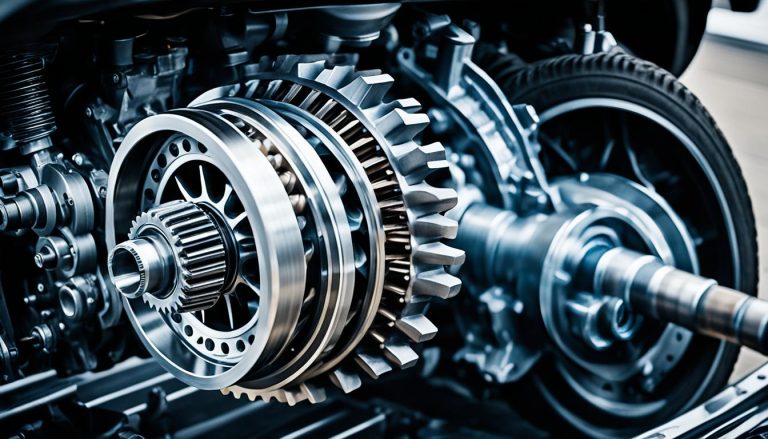Ford Explorer 8.8 Rear End Limited Slip Guide
Are you aiming to elevate the traction and performance of your Ford Explorer? Look no further than the Ford Explorer 8.8 rear end limited slip. This powerhouse of an axle has been a staple for Ford performance enthusiasts, and its versatility extends to various Ford models. Known for its steadfast durability, the 8.8 rear end upgrade could be the game changer you need for your Explorer.
With a rich heritage stemming from V-8-equipped models since 1986 to V-6-powered Rangers and Explorers, this rear axle isn’t just for the newer models; older Explorers can also benefit massively. Whether you’re surfing through salvage yards for a project or seeking a direct Ford Explorer differential upgrade, the 8.8 rear end for Ford Explorer with Traction-Lok limited slip differential is a robust pick.
Key Takeaways
- Understand the strength and popularity of the Ford Explorer 8.8 rear end limited slip
- Learn about the benefits of upgrading to the Traction-Lok differential with 31-spline axles
- Acknowledge the availability of salvage yard finds for a cost-effective upgrade
- Know that the 8.8-inch rear axle offers a variety of factory gear ratios for optimized performance
- Discover the ease of identifying a limited slip differential through visual inspection
- Realize that most 1991-2001 Ford Explorers come factory-equipped with a sturdy 31-spline 8.8-inch axle
Ford Explorer 8.8 Rear End Limited Slip: An Overview
Delve into the world of robust traction and dynamic handling with the Ford Explorer’s esteemed 8.8-inch rear axle. A staple in the marque’s lineup, this axle represents a fusion of strength and advanced technology.
Introduction to the Ford 8.8-inch Axle
Renowned for its durability, the Ford 8.8-inch axle has carved a niche for itself in the automotive world. Serving a myriad of Ford models, its solid design is particularly pivotal in the Ford Explorer series, underpinning models from 1991 to 2001 and the Ford Explorer Sport until 2003. This axle is not just about endurance but also versatility, adapting seamlessly across different terrains and driving conditions.
Why Choose a Limited Slip Differential for your Explorer?
Imagine navigating through a rocky terrain or a slippery road with unwavering confidence — that’s the hallmark of a limited slip differential for Ford Explorer. Superior to open differentials, this upgrade targets power to the wheels with the most grip, minimizing spin and promoting a balanced drive. Such a system is invaluable when it’s essential to maintain steady traction amidst challenging environmental elements.
Models and Years: Identifying Your Explorer’s 8.8 Rear End
If you’re setting out to pinpoint whether your Explorer is equipped with this famed axle, look for the distinct ID tag on your Ford Explorer rear differential. This small detail holds crucial information about the gear ratio and the presence of a limited slip differential, guiding you towards a more informed decision about potential upgrades or maintenance needs. Moreover, the Explorer-specific axle is identifiable by prominent features such as rear disc brakes post-1995 and strategically mounted spring perches.
The width of your Explorer’s 8.8 axle may also provide insights, as different model years came with variances. Notably, Ford Explorers from 1991 to 2003 boasted a width of 59.625 inches — a specification worth noting for those considering further enhancements.
When it comes to vehicular care, one must stay vigilant about the condition and quality of every component. For your Explorer’s rear end longevity, ensuring that you use the recommended Ford Explorer rear differential fluid is paramount, as it keeps the parts well-lubricated and functioning smoothly, so your travels remain unimpeded by mechanical woes.
Benefits of Upgrading to a Limited Slip Differential
For Ford Explorer enthusiasts looking to enhance their driving experience, particularly when navigating challenging road conditions, upgrading to a Ford Explorer limited slip differential is a decision that pays dividends. Not only does it significantly improve your vehicle’s traction, but it also brings a new level of performance and safety to your driving dynamics.
When you opt for a ford explorer rear differential upgrade, you’re investing in a system designed to maximize the power delivery to each wheel. The enhancement is especially noticeable when one tire encounters slippery conditions where an ordinary differential would falter.
Enhanced Traction and Performance
Whether you’re dealing with wet roads, icy patches, or traversing rugged off-road terrains, the surefooted grip provided by a limited slip differential ensures that you’re less likely to find yourself stuck or losing control. By smartly distributing torque to the wheel with the most traction, it prevents the wheel spin that characterizes less advanced differentials and maintains steady and reliable power delivery for your Ford Explorer.
Enhancing traction for Ford Explorer with a limited slip differential translates to a more stable and responsive ride, giving you the confidence to tackle a broader range of driving surfaces with ease.
Comparison: Limited Slip vs. Open Differential
Below is a table illustrating the key differences between a Limited Slip Differential and an Open Differential for a clearer understanding:
| Feature | Limited Slip Differential | Open Differential |
|---|---|---|
| Traction | Better grip, reduces wheel spin | Can lead to wheel spin under low traction |
| Torque Distribution | More to the wheel with grip | Equal to both wheels, regardless of grip |
| Performance | Improved, especially in adverse conditions | Standard, may struggle in adverse conditions |
| Safety | Enhanced stability during cornering | Less control during spirited driving |
Should you find yourself yearning for that extra edge in your Ford Explorer’s performance, consider the significant advantages a limited slip differential has over the traditional open type. Its ability to proactively manage wheel spin and maintain traction makes it an invaluable upgrade for any adventurous or safety-conscious driver.

Identifying a Ford Explorer 8.8 Rear End with Limited Slip
For Ford Explorer enthusiasts eager to boost their vehicle’s performance, accurately identifying whether your 8.8 rear end is equipped with a limited slip differential is crucial. With some expert guidance, you’ll be decoding Ford Explorer limited slip differential details like a pro.
Decoding the ID Tags
Begin with the ID tags attached to the differential. These metal tags contain code that can reveal not only the gear ratio but also the type of differential. An ‘L’ signifies Limited Slip, while a ‘C’ points to a Conventional non-limited slip differential. This invaluable information will set you on the right path to understanding what’s under your Explorer.
Visual Inspection Tips
Should the ID tag be missing or illegible, don’t fret! A visual inspection provides clues too. Removing the differential cover exposes the internal gears where, in a limited slip differential, you’ll spot the characteristic S-shaped clips pressing against the side gears—a tell-tale sign of the traction-aiding device.

Understanding Axle Codes and Common Dimensions
Familiarizing yourself with the axle codes located on the door jamb sticker or differential tag is also essential in understanding axle codes in your Ford Explorer. These codes can help you decipher the specific gear ratio and differential type installed in your vehicle. Additionally, an awareness of common axle dimensions such as tube diameters and spline counts enhance your knowledge for future upgrades or replacements. Here’s a quick guide to the spline counts and their relative strength improvement:
| Spline Count | Strength Increase | Common Dimension |
|---|---|---|
| 28-Spline | Baseline | 2.80 inches Diameter |
| 31-Spline | 16-34% | 3.25 inches Diameter |
With this knowledge, you’re now better equipped to identify the specifics of a Ford Explorer rear end, especially the presence of that coveted limited slip differential. Happy modding!
Step-by-Step Guide to Ford Explorer Rear End Rebuild
Upgrading your Ford Explorer rear end to include a limited slip differential can be a rewarding project that not only enhances your vehicle’s performance but also its reliability. If you’re a hands-on vehicle enthusiast prepared to take on this task, you’ll want to ensure you have the right tools and information at your disposal. In the sections that follow, we’ll walk you through the necessary steps and key considerations for a successful rear end rebuild.
Required Tools and Materials
Before you dive into the rebuild, it’s imperative to assemble the necessary tools and materials. Essential items include a reliable grinder, a capable welder for ¼-inch steel, a set of new bearings, durable seals, and possibly upgraded 31-spline axles. Acquiring quality components is a must as compromised parts can lead to a subpar rebuild. Ensure you equip yourself with the proper safety gear and maintain a clean and organized workspace to facilitate an efficient rebuild process.
Disassembly and Inspection
Disassembling your Ford Explorer rear axle demands precision and attention to detail. Inspect each component, such as gears and bearings, for any signs of wear or damage. Pay special attention to the 31-spline axles, which are central to your upgrade. Any unnoticed defect could undermine the performance of your newly rebuilt rear end. Document each step of the disassembly to assist with the reassembly process.
Reassembly and Installation of Limited Slip
The reassembly stage is crucial. During this phase, you will begin by installing the new or upgraded components, making sure that all fits are correct and all parts are compatible, especially if you’re integrating a limited slip differential. Ensure the differential fluid you use is the correct type and capacity for your Ford Explorer model. Tackling these delicate aspects with care will yield a robust and more efficient rear end. Once everything is back in place, remember to change your ford explorer rear differential fluid according to manufacturer specifications and maintain regular inspections to prolong the life of your newly upgraded system.
FAQ
What is a Ford Explorer 8.8 rear end with limited slip?
A Ford Explorer 8.8 rear end with limited slip refers to an axle setup that features a differential mechanism capable of limiting the amount of spin one wheel can have relative to the other. This means that if one wheel begins to lose grip, the limited slip differential will transfer more power to the wheel with better traction, which is especially useful in slippery or off-road conditions.
Why should I consider a differential upgrade for my Ford Explorer?
Upgrading your Explorer’s differential to a limited slip unit can significantly enhance traction under various driving conditions, improve handling during acceleration and cornering, and offer a safer and more stable driving experience overall. It is a popular modification for those looking to improve their vehicle’s performance.
What should I look for when identifying if my Ford Explorer has an 8.8 rear end?
To identify if your Explorer is equipped with an 8.8 rear end, look for an identification tag on the differential cover or the axle tube. This tag should give you information about the gear ratio and whether it’s equipped with a limited slip differential. For Explorer models post-1995, rear disc brakes and spring perches mounted below the axle tube are also indicative of the 8.8-inch rear axle.
What are the benefits of upgrading my Ford Explorer to a limited slip differential?
The benefits of upgrading to a limited slip differential include improved vehicle traction, particularly in adverse road conditions where one wheel may lose grip. It also provides better handling and stability during aggressive driving maneuvers, which can enhance safety, control, and drive quality.
How can I tell the difference between a limited slip differential and an open differential?
An open differential allows each wheel to rotate at different speeds, which can result in reduced traction if one wheel loses grip. A limited slip differential, on the other hand, will limit the speed difference between the two wheels, transferring more torque to the wheel that has more resistance, leading to better traction and handling.
How do I decode the ID tags to tell if my Ford Explorer has a limited slip differential?
The ID tags can be found on the differential cover or axle tube, and decoding them can provide you information about the type of differential. If the differential is limited slip, the tag will usually have an ‘L’ indicating Limited Slip or a specific code for the Ford Traction-Lok version. Your vehicle’s owner manual or a Ford dealership can help you interpret these codes.
What should I look for during a visual inspection of my Ford Explorer’s rear end?
During a visual inspection, if you’re checking for a limited slip differential, look for large S-shaped clips that press against the inside of the side gears, which are visible once the rear differential cover is removed. Additionally, checking for wear on the gears, differential bearings, and axles is important to assess the condition of your rear end.
What are the common dimensions I need to know for my Ford Explorer’s axle?
The common dimensions include the overall axle width, spline count of the axles, and tube diameter. Ford Explorers typically have an axle width of 59.625 inches from 1991-2003. The tube diameters range from 2.80 to 3.25 inches, and you may have 28-spline or 31-spline axles, with the latter providing more strength.
Can you guide me through a rear end rebuild for my Ford Explorer?
A rear end rebuild generally involves disassembling the existing setup, inspecting and replacing worn or damaged parts such as gears and bearings, and reassembling the components with attention to detail, including selecting the appropriate differential fluid and ensuring that the axle is properly aligned and torqued according to specifications.
What tools and materials are required for a rear end rebuild on a Ford Explorer?
You will need a variety of tools for a rear end rebuild, including a grinder, a welder capable of handling ¼-inch steel, as well as new bearings, seals, differential fluid, and potentially upgraded axles. It’s important that you’re comfortable and proficient with these tools to ensure a successful rebuild.
How often should I change the rear differential fluid in my Ford Explorer?
It’s recommended to change your rear differential fluid approximately every 30,000 to 50,000 miles, or as advised in your Ford Explorer’s owner’s manual. However, if you frequently drive in harsh conditions or use your vehicle for towing, you might need to change the fluid more often.

